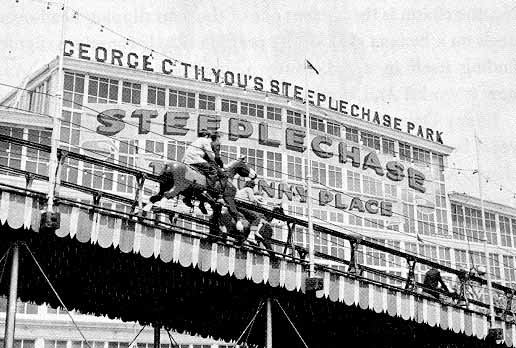Background
The neighborhood of Coney Island has served as one of New York City’s most popular attractions for residents and tourists alike. Located right next to the sea and easily reached by other boroughs in New York City it began attracting many people, from vacation-goers to developers. With the advancement of transportation in New York City, Coney Island became a major resort destination. Because of the easy accessibility, many saw the beach as escape from the busy city and a place for relaxation.

However, starting in the early 1900s, Coney Island started to lose its appeal. With the development of air conditioners and automobiles, people found other ways and places to cool off. This marked the beginning of one of many transitions that Coney Island would go through. Having lost its glamor as a luxurious beachside resort, the city made efforts to revive the beach. Over the course of its history, Coney Island has made many new developments to keep up changing interests and demands.
1897- Steeplechase Park
It was one of the most influential amusements parks of all time; It was created by George C. Tilyou after he got inspiration from The World’s Columbian Exposition in Chicago. He based many attractions in the park off of landmarks such as the Eiffel Tower. However, it closed in 1964 because developers felt that there needed to be more residential buildings in the area for the growing population.

1904- Luna Park
Up until 1944, Luna Park served as one of Coney Island’s biggest attractions. However, in 1944 it burned down in a fire and was not reintroduced back to Coney Island until recently in the year 2010.

1923- Riegelmann Boardwalk
It was built as a border to mark the beginning of the beach. It stretches 2.51 miles from West 37th street all the way to Brighton 14th street. It was built as a way to reclaim the beach and easier access to the beach.

Late 1900s to Early 2000s
In the 1980s, a businessman, Horace Bullard, bought several acres of property east of the old Steeplechase Site in hopes to rebuild the theme park. At the same time, other developers came in to compete for the site. For the next five years, the site was untouched and was fought over by developer after developer.
Then in 1994, Mayor Giuliani killed all the deals and the site was left untouched again for another decade. In 2003, Joe Sitts, CEO of Thor Equities and the City decided to revitalize Coney Island. However, both parties had very different views of what they wanted Coney Island to look like. Joe Sitts, wanted to tear down iconic buildings and construct condominium and hotels all long the boardwalk. The city wanted to revive Coney Island has the attraction it used to be – one that was filled with amusement parks and attractions.
The Dipity Timeline above also displays the history and updated current news about Coney Island.

